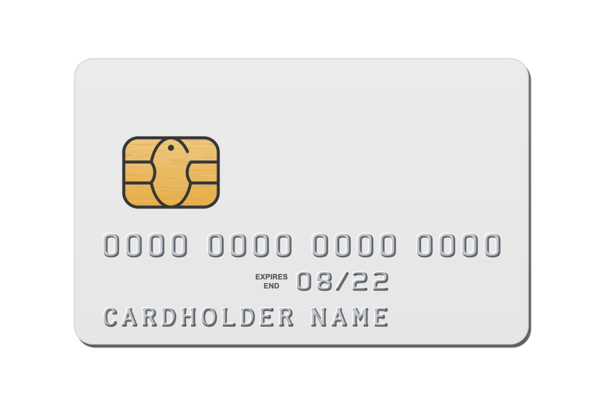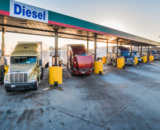Credit cards are now being issued with a small chip (called the EMV chip), and business owners across the country have had to update their point-of-sale systems to accommodate chip cards. The first point-of-sale requirements took effect in 2015, but another deadline is on the horizon. Fuel retailers have until Oct. 1, 2020, to install EMV chip-card readers at automated fuel dispensers. Here’s what you should know about EMV chip technology to ensure you’re ready by the 2020 deadline.
What is EMV?
EMV stands for Europay Mastercard Visa. EMV chips, which most of you have now seen on your credit and debit cards, are designed to limit the potential for fraud that is currently tied to magnetic stripe cards, which can be duplicated easily by criminals.
EMV compliance stipulates that all businesses need to upgrade their point-of-sale (POS) systems to accommodate EMV chip cards and EMV compliance. Otherwise, you won’t be able to avoid liability under new credit card chip reader law. As noted above, major credit card companies requested most merchants upgrade their systems by Oct. 1, 2015.
Automated fuel dispensers were originally slated to comply by Oct. 1, 2017, but were granted additional time by Visa, MasterCard and American Express, and the U.S. deadline for installing EMV chip-card readers at automated fuel pumps is now Oct.1, 2020.
How does an EMV card work?
Rather than being swiped into a card reader, EMV chip cards are dipped into compliant readers so that the reader interacts with the chip. The square chips on the edge of EMV cards ensure that the card generates one-time transaction codes unique to each purchase.
This process, known as tokenization which obscures the purchaser’s actual credit card number during the purchasing process so that the chip reader only sees random alphanumerical strings. After the smart chip communicates to the card processor to verify and authenticate purchase and availability of funds, the transaction is processed. Plus, EMV technology allows customers to pay securely via their smartphones and smart devices using NFC radio wave technology with compatible EMV readers.
What do I need to know as a fuel retailer?
For those of you that have upgraded dispensers or card readers to accept the chip card readers, congratulations on avoiding the impending rush! If you have not yet done so, now is the time!
Failure to upgrade your site to accept chip card readers at your site will cost you in many ways if you have not done so already.
Transactions that fail to recognize the chip will be downgraded and subsequently process as a downgraded transaction. This downgrade is estimated to cost an additional 1 percent or 2 to 4 cents per gallon based on today’s prices or more.
You would likely also be assessed a monthly fee from Visa, Mastercard and AMEX. Additionally, you or your processor could be liable for any fraudulent transactions.
For some of you, meeting the compliance requirements will mean you have to replace dispensers, which could also create additional costs as you comply with any updated spill/containment requirements.
This could be a lengthy process that could have a significant cost associated with it. You will want to plan out ahead and frankly time is running out!
But, take heart because once you do make the switch, you will not only reduce your liability risks, but also can improve your speed of service.
Although the EMV chip reader takes several seconds to process a payment, but it eliminates the requirement for a signature. If your POS/payment terminal is still prompting for signatures you are putting your customers through a painful, unnecessary lengthy transaction which is killing your speed of service!
Think of adding 10 seconds or more to every transaction all while the customer is staring at this device! Awkward and unnecessary for the customer and totally unproductive for your employee!
Where do I start?
Contact your petroleum equipment and service provider to have an assessment done of your current equipment to see what is needed. Also, get in touch with your processor and get your payment terminals “injected” with the most recent parameters.
NATSO Business solutions is available to help answer and questions you might have or connect you with our Industry partners such as First Data Corporation for more insight on credit card processing and how you can reduce your cost of processing.
Why is this being done?
Chip cards are designed to reduce fraud. The United States leads the world in credit card fraud by a huge margin. Fraud losses incurred by banks and merchants on all credit, debit and pre-paid general purpose and private label payment cards issued globally hit $21.84 billion in 2015.
The U.S. currently accounts for 38.7 percent of global debit and credit card fraud even though it generates only 22.9 percent of the total global purchase and cash volume, according to Global Card Fraud in a recent issue of the Nilson report. It is predicted that losses in the U.S. could reach up to $12 billion by 2020.
// Want more travel center business advice? Through NATSO's consulting program, Travel Center Profit Drivers, NATSO provides access to specialized, experienced consultants and the tools they’ve created to help travel centers thrive. These services include assistance on areas such as new construction, payment processing, branded and unbranded contracts and much more. Travel Center Profit Drivers is led by Darren Schulte and myself. Combined we have over 60 years of experience in the truckstop and travel center industry. Our goal is to assist and we are not driven to sell you something. This allows us to have your best interest at heart!
Please contact me at dquinn@natso.com or (703) 739-8572 to discuss how our team can assist you. Learn more about a Travel Center Profit Toolbox here.
Subscribe to Updates
NATSO provides a breadth of information created to strengthen travel plazas’ ability to meet the needs of the travelling public in an age of disruption. This includes knowledge filled blog posts, articles and publications. If you would like to receive a digest of blog post and articles directly in your inbox, please provide your name, email and the frequency of the updates you want to receive the email digest.



